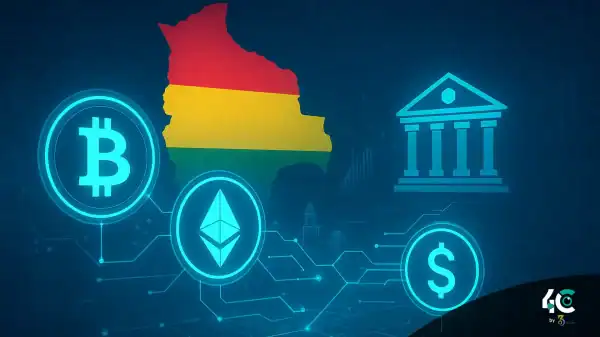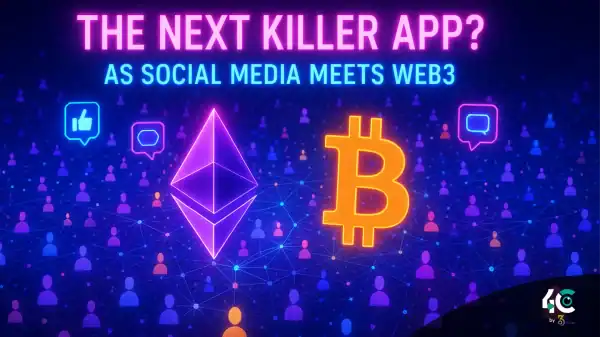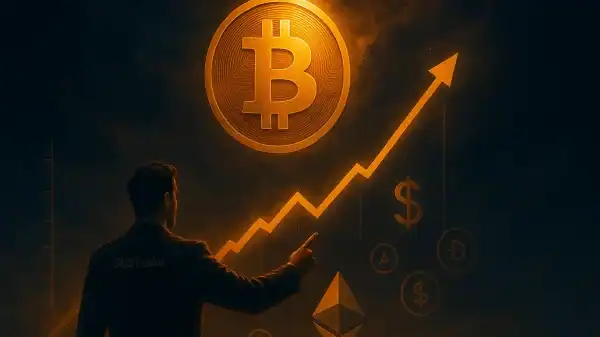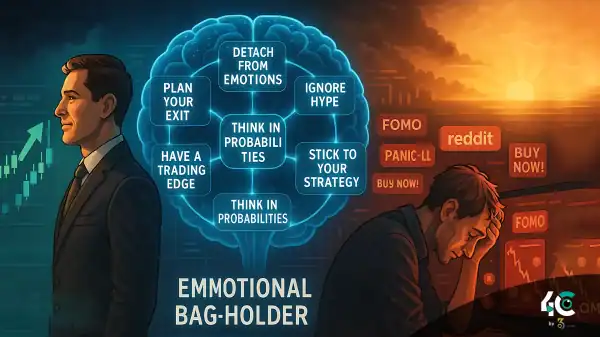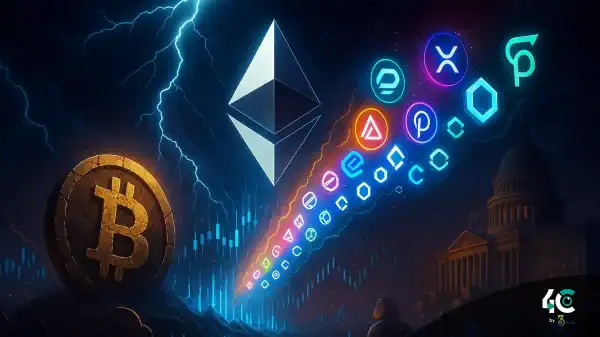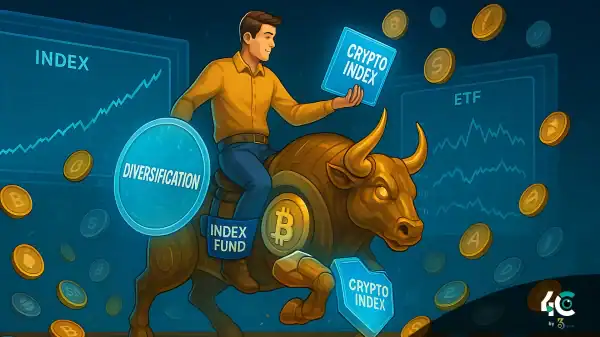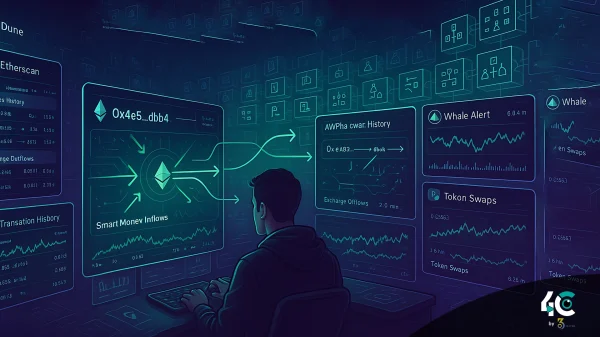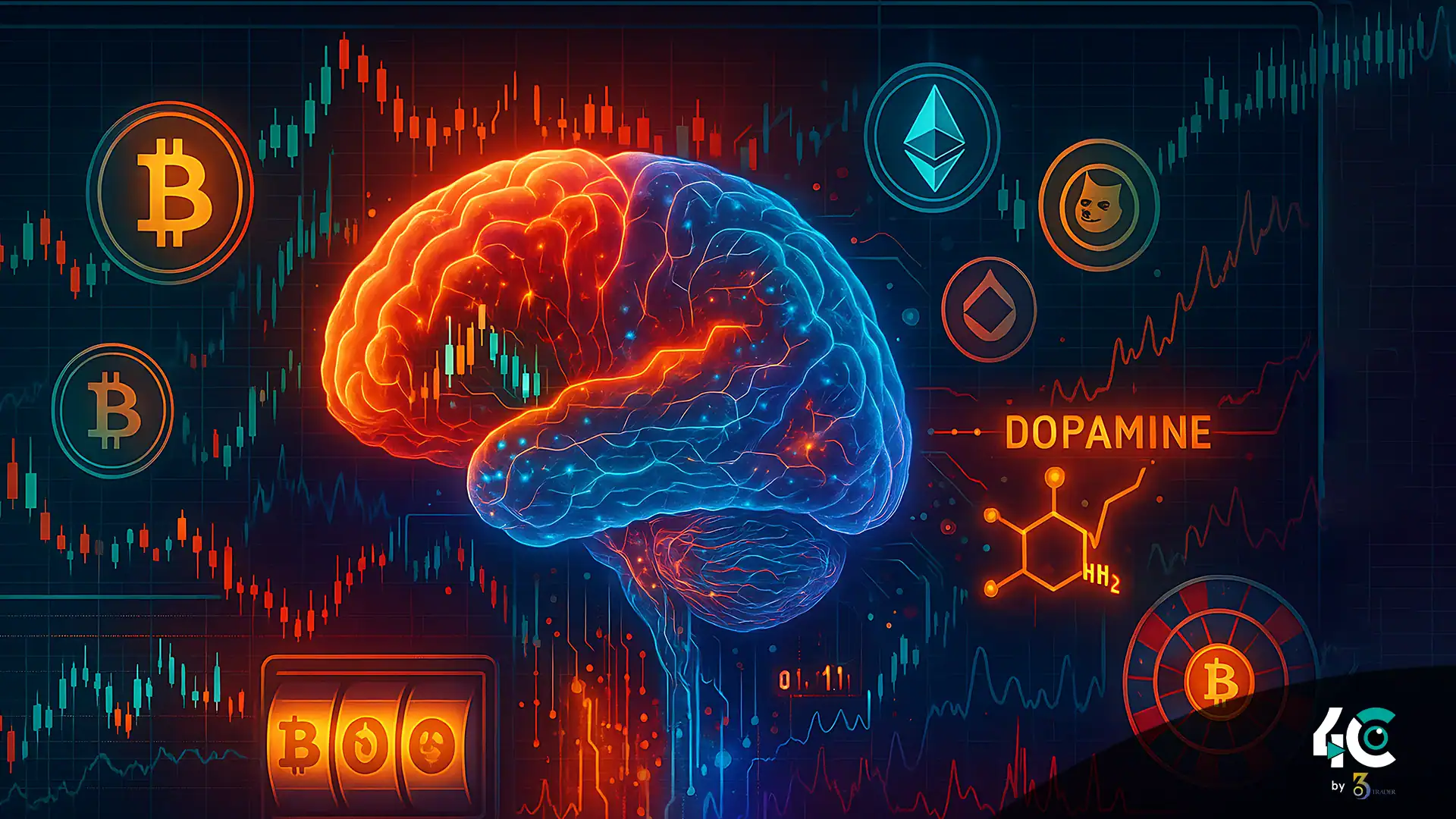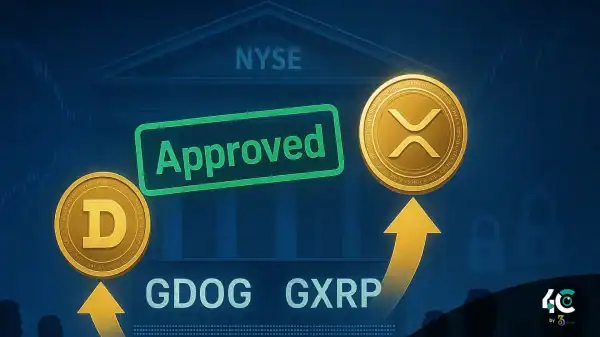The Science Behind the Crypto High
Cryptocurrency prices are very volatile, and this volatility triggers the brain’s reward system, causing pleasure in the brain. Here’s how it works:
Dopamine Release During Wins
Your brain releases this feel-good dopamine every time you see a noticeable gain in your portfolio or execute a winning trade. This increase in strength makes an action more likely to be repeated—like pulling the lever of a slot machine after winning the jackpot.
Near‑Misses Trigger Anticipation
Research reveals that near misses—such as losing at the last moment or perfectly timing the market—activate the same brain regions as wins. Traders stay interested in the suspense that “almost wins” create, even if the actual outcome is uncertain.
Loss Aversion Fuels Risk‑Taking
Our capacity to feel the pain of losing is regulated by the amygdala, which controls fear and stress. Some traders, facing that pain, double down on dangerous wagers hoping to recover their losses.
Uncertainty Amplifies Excitement
Traditional investing may feel predictable, but crypto is inherently uncertain. Every price movement becomes intensified when outcomes are unclear.
Why Crypto Feels Like Gambling
Cryptocurrency trading and gambling align at a neurological level—sharing reward loops built into our brain’s design.
- Intermittent Rewards Keep You Hooked
Crypto traders are much like gamblers who rarely walk away from the table without hitting a win. The allure of another big payoff keeps them glued to their screens. - Emotional Roller Coasters Drive Engagement
Winning triggers exhilaration, while losses lead to deep emotional pain—each reinforcing the addictive cycle. - Social Validation Amplifies the Rush
Platforms like Reddit, Twitter, and Discord add a community element. Seeing others profit can heighten one’s confidence and FOMO (fear of missing out).
Examining the Behavior of Bulls in the Market
Phase 1: FOMO Sets In
Stories of overnight millionaires flooded social media. Exchanges were swarmed by traders eager to replicate those wins. Every spike released more dopamine—and more traders joined.
Phase 2: Panic Sets In
When the market reversed, panic selling ensued. Fear of losing out (FOLO) triggered stress responses. Those caught up in the hype often chased losses instead of stepping back—classic addictive behavior.
Outcome
Early adopters became millionaires. Latecomers lost heavily. Despite widespread losses, many returned when prices stabilized—demonstrating the powerful pull of the brain’s reward circuitry.
The Risks of Reward‑Driven Trading
Crypto trading can be addictive, but it brings serious risks:
- Impaired Decision‑Making
Under intense dopamine release, traders make emotional decisions rather than rational ones. - Addiction‑Like Behavior
The craving for that “high” mirrors gambling addiction in intensity. - Financial Instability
Chasing highs leads to unsustainable risk-taking and potential ruin.
Mitigating the Effects of Dopamine‑Driven Trading
Understanding the neurology behind crypto trading offers ways to reduce harm:
- Set Clear Boundaries
Use fixed entry and exit points and stop‑loss orders to minimize emotional reactions. - Practice Mindful Trading
Meditation and journaling help maintain focus and emotional balance. - Diversify Investments
Spread risk across asset classes—don’t rely solely on high‑risk instruments. - Seek Professional Help
If trading begins to control your life or finances, consult a therapist or financial advisor.
Conclusion: Taking Charge of the Crypto Mind
The neuroscience of trading makes clear why crypto is intoxicating—and dangerous. It’s not just about money.
The cryptocurrency market taps directly into the brain’s reward systems, creating a feedback loop of risk and emotion that’s hard to resist. But with awareness and discipline, traders can manage their trading psychology and avoid getting swept away.
Conclusion
Research indicates that winning big or nearly winning in cryptocurrency trading triggers a dopamine rush, while losses activate a stress response, similar to gambling. These emotional peaks and valleys can be addictive and cloud judgment. Extreme market volatility may lead to impulsive decision‑making and emotional turmoil. Traders can protect themselves by setting clear limits, staying informed, diversifying portfolios, and seeking expert advice. By understanding how the brain processes trading excitement, individuals can manage their reactions and engage more responsibly in the crypto market.


